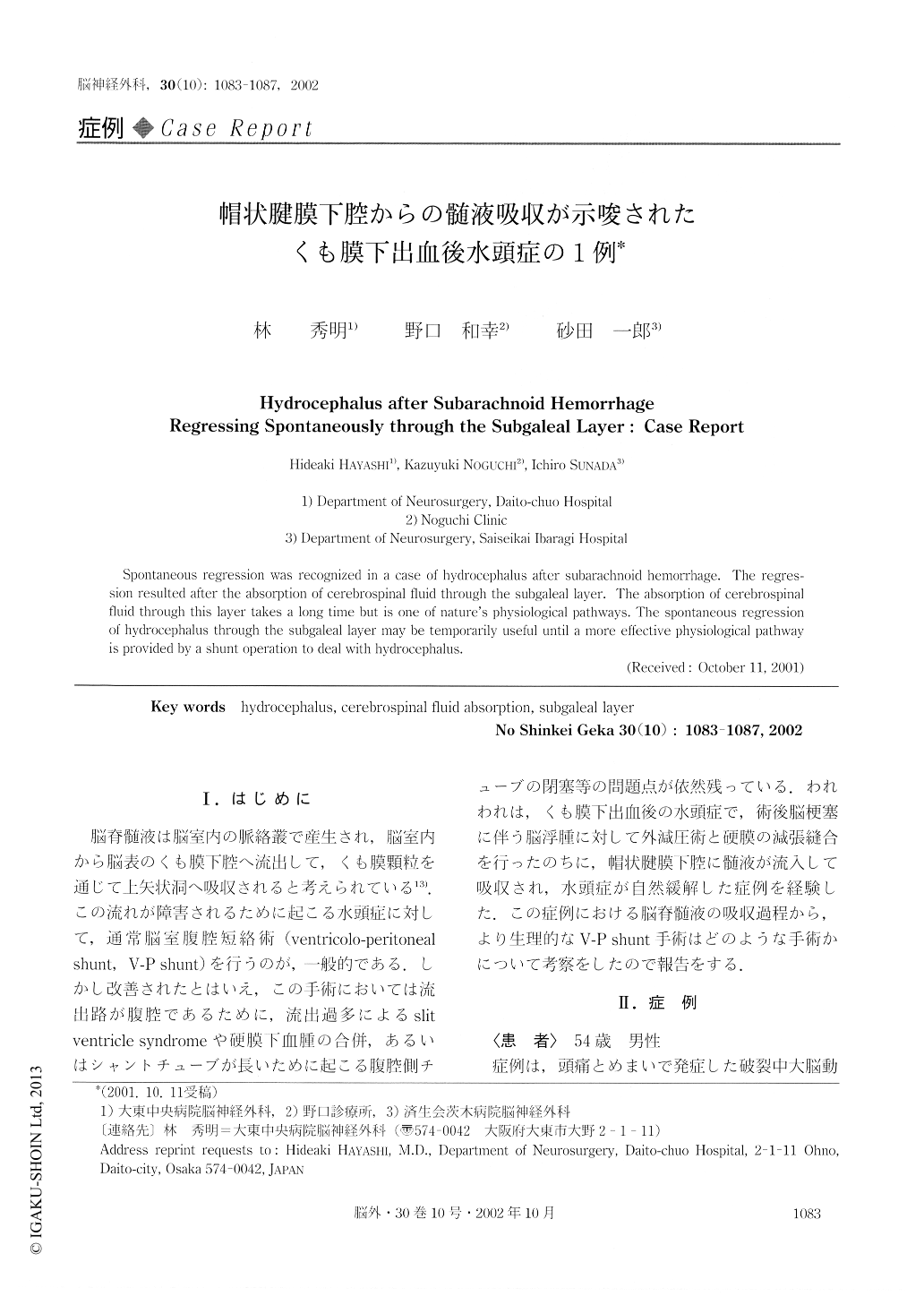Japanese
English
- 有料閲覧
- Abstract 文献概要
- 1ページ目 Look Inside
Ⅰ.はじめに
脳脊髄液は脳室内の脈絡叢で産生され,脳室内から脳表のくも膜下腔へ流出して,くも膜顆粒を通じて上矢状洞へ吸収されると考えられている13).この流れが障害されるために起こる水頭症に対して,通常脳室腹腔短絡術(ventricolo-peritoneal shunt,V-P shunt)を行うのが,一般的である.しかし改善されたとはいえ,この手術においては流出路が腹腔であるために,流出過多によるslit ventricle syndromeや硬膜下血腫の合併,あるいはシャントチューブが長いために起こる腹腔側チユーブの閉塞等の問題点が依然残っている.われわれは,くも膜下出血後の水頭症で,術後脳梗塞に伴う脳浮腫に対して外減圧術と硬膜の減張縫合を行ったのちに,帽状腱膜下腔に髄液が流入して吸収され,水頭症が自然緩解した症例を経験した.この症例における脳脊髄液の吸収過程から,より生理的なV-P shunt手術はどのような手術かについて考察をしたので報告をする.
Spontaneous regression was recognized in a case of hydrocephalus after subarachnoid hemorrhage. The regres-sion resulted after the absorption of cerebrospinal fluid through the subgaleal layer. The absorption of cerebrospinal fluid through this layer takes a long time but is one of nature's physiological pathways. The spontaneous regression of hydrocephalus through the subgaleal layer may be temporarily useful until a more effective physiological pathway is provided by a shunt operation to deal with hydrocephalus.

Copyright © 2002, Igaku-Shoin Ltd. All rights reserved.


